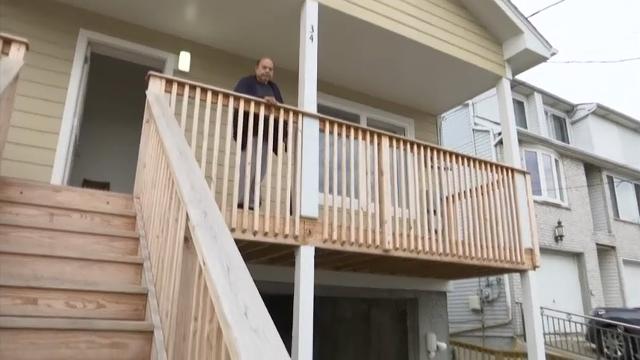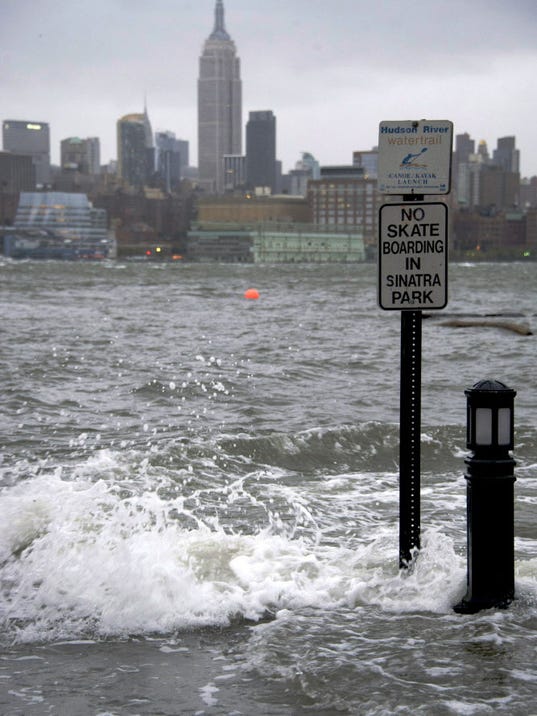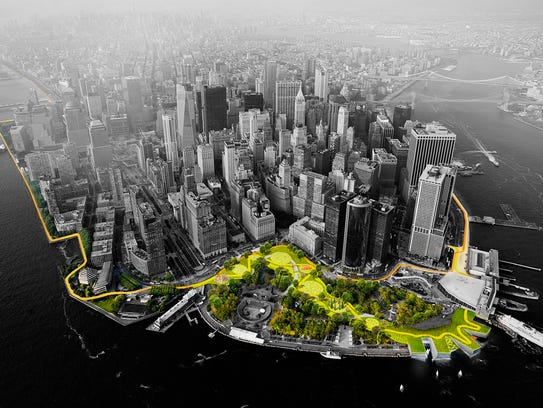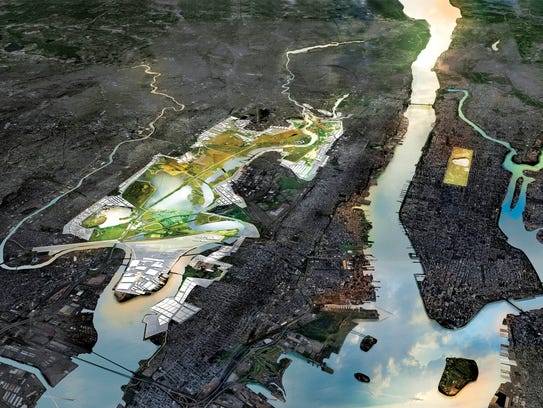How Cities are Defending Themselves Against Sea Level Rise
Published on by Robert Brears, Founder of Our Future Water, Young Water Leaders, Mitidaption & Author (Springer Nature, Wiley) in Government
It's been five years since Superstorm Sandy inflicted billions of dollars in damage in New York and New Jersey, but many wonder if the region is any more prepared for extreme weather now than it was before Sandy.
By Wayne Parry, Associated Press
Superstorm Sandy and a series of lesser coastal storms since that 2012 disaster compelled some coastal communities to defend themselves by elevating homes and critical infrastructure, building sand dunes, widening beaches and erecting or raising sea walls.


(Photo: Charles Sykes, AP)
But as sea levels continue to rise around the world, that's not an option in large cities, where skyscrapers can't be elevated and subway and train tunnels act as turbocharged flumes when millions of gallons of stormwater rush through them.
The answer, some cities have decided, is a mixture of hard and soft barriers; green infrastructure to capture rain and absorb storm water; temporary storage space for runoff; and drastically increased pumping measures.
PROGRESS: Recovery efforts continue 5 years after Superstorm Sandy

This illustration provided by Rebuild by Design in October 2017 shows a flood-mitigation design for the Manhattan borough of New York. The BIG U proposal calls for a 10-mile protective system around the low-lying southern part of the island. The proposal is part of the Rebuild by Design competition to create infrastructure that would protect coastal areas affected by Superstorm Sandy. (Photo: AP)
Here's a look at some steps being taken by cities to address the issue:
LOS ANGELES
In addition to physical barriers and widened beaches, Los Angeles is planting trees and paving some roads with cooler surface material so that less heat is reflected. They and other cities have also baked sustainability and resiliency concerns into municipal polices on development.
"It's a challenge and an opportunity at the same time," said Matt Petersen, who served as the city's chief sustainability officer until earlier this year. "Infrastructure and buildings are vulnerable to sea level rise. We can't solely build our way out this this, but we can take steps to mitigate it long term. There are 150 million Americans that are vulnerable to sea level rise, and cities need to address that."

This illustration provided by Rebuild by Design in October 2017 shows a flood-mitigation design for the Meadowlands area of New Jersey, left. At right is New York. The New Meadowlands proposal would address fixes for the flood-prone area, including transforming the area into a flood-protected public park that would have a system of berms and marshes and also create connections with area towns. The proposal is part of the Rebuild by Design competition to create infrastructure that would protect coastal areas affected by Superstorm Sandy. (Photo: AP)
The Port of Los Angeles recently added 6 inches to the height of its proposed Wilmington Waterfront Promenade to compensate for anticipated sea level rise.
BALTIMORE
Baltimore requires new construction to have an additional two feet of elevation, and some existing buildings have been raised. The city uses bulkheads, and is integrating parks into green space flood-absorption areas. It is considering protective walls for certain vulnerable parts of the city.
Attached link
http://www.lohud.com/story/weather/2017/10/29/cities-defending-sea-level-rise/811529001/Media
Taxonomy
- Climate Change
- Climate Change Adaptation
- Climate Change Resilience
- Infrastructure
- Green Technology
- Green Building
- green infrastructure